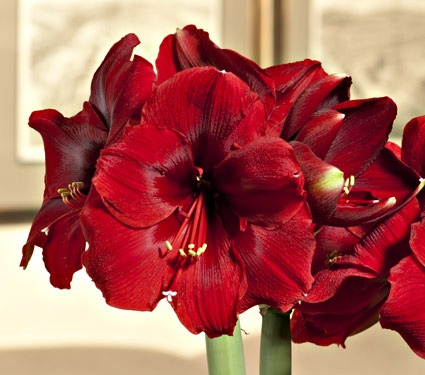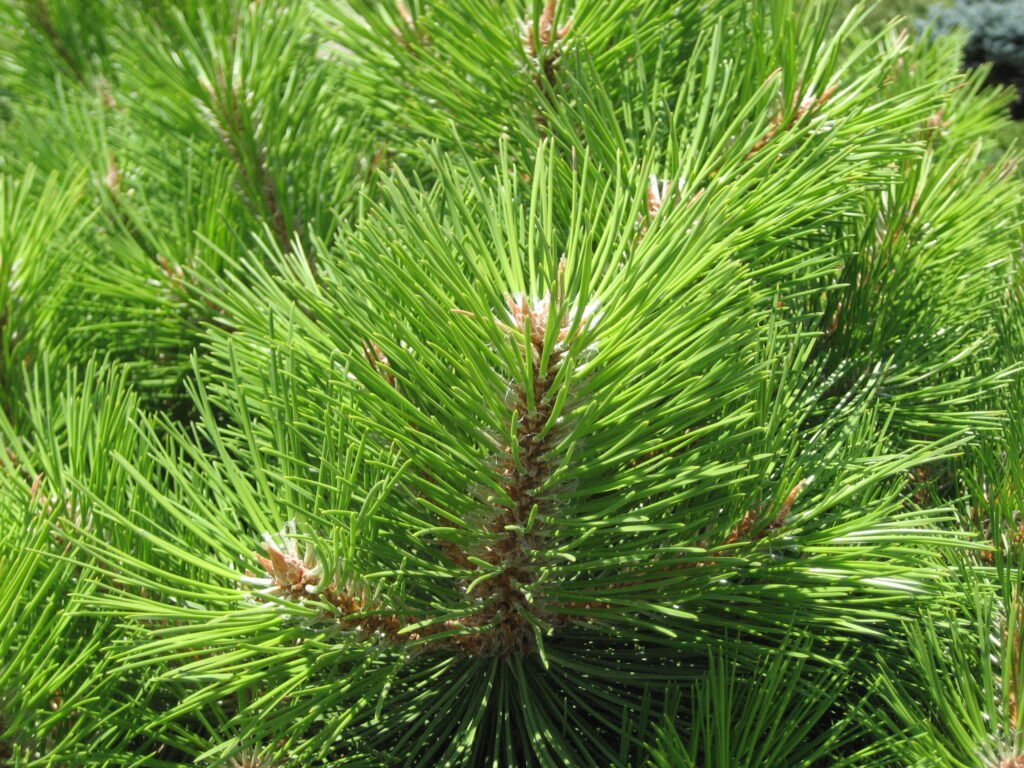Blooming amaryllis bulbs are a sure sign that Christmas is right around the corner. Follow the instructions below to produce vibrant, long-lasting flowers throughout the Holiday season!
Soil – The best growing media for your Amaryllis bulb is a mix of 2 parts potting mix to 1 part sand and 1 part black topsoil. Amaryllis bulbs like a heavier soil to help hold the roots and bulb in place when the plant gets top-heavy! If you plant in a different mix, be sure to stake the stem to avoid the bulb from tipping over (and uprooting).
Container – A terra cotta pot is ideal for amaryllis bulbs. This allows the soil to dry out faster, plus it is heavy enough to keep the flower from toppling over!
Planting – First add a layer of your soil mix to the bottom of your container. Place the bulb on top of the 1st layer of soil and spread out the roots. Next, add the soil mix around the roots and halfway up the bulb, while compacting the soil firmly as you go.
It is important to remember to leave half of the bulb exposed!
Care While in Bloom – Water the bulb and place in a sunny window in a cool room. This will keep the bulb from growing too fast, allowing the plant to produce a thicker, firmer stem. Be sure to allow the soil to become dry between waterings. No fertilizer is required at this point.
Care After Bloom – Once your Amaryllis is finished blooming, keep it in a sunny window and water only when dry. Take a sharp knife and cut the flower stock off 1-2″ above the bulb. When the leaves begin to actively grow, fertilize your plant 2 times a month. When is gets warm in the spring (after frost is no longer a threat), move the bulb container outside to a lightly shaded area. Slowly work the plant into the sun. *Remember, the leaves were protected in your house and need to be acclimated to the sun. Then, plant the bulb in a directly into the ground.
Care After Bloom (In Fall) – Before a killing frost in the fall, dig up your bulb and cut back the leaves with a clean, sharp knife. Pot up your amaryllis bulb using the planting steps above, and place in a basement or dark room. Keep an eye on the plant and watch the plant begin to produce another bud. Once this happens, the cycle of care begins again, and you will be ready for another round of beautiful winter blossoms!




